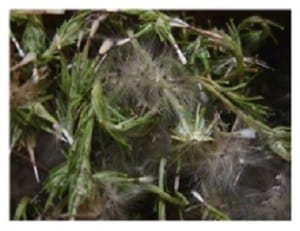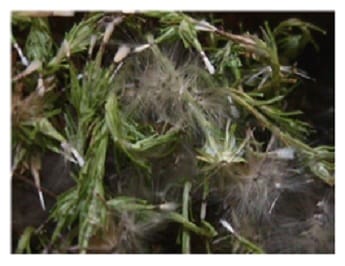“Cottony Weed” in Lawns
Tim R. Murphy, Retired Extension Weed Scientist
PDF Version of Cottony Weed article
It seems that all of a sudden, numerous lawns in Georgia are turning white. Well it is not snow, nor is it left over cotton from last fall. The “cottony” appearance is due to the presence of a weed named facelis (Facelis retusa).
Facelis
Facelis, also called annual trampweed, is a winter annual member of the Aster family that reproduces by wind-blown seed. This weed reaches heights of 4 to 6 inches and has alternate wedge-shaped leaves with a small tooth at the tip. The upper leaf surface is green, while the lower leaf surface is densely gray due to the presence of leaf hairs. Flowers are very inconspicuous; however, seed have soft, white bristle-like hair. With severe infestations the lawn becomes white when seed are being released from the plant. Typically facelis is found in lawns with a low density of turfgrasses, as well as on open, droughty, low fertility sandy or clayey soils.
Facelis actually germinates in the fall and late winter months, produces seed in late April to June and then dies. May is not the preferred time to control facelis, as the weed is essentially in the process of dying.
There has been very little research done on controlling this weed in turfgrasses. Additionally, this weed does not appear on herbicide labels. However, herbicides that contain 2,4-D, MCPP, dicamba and triclopyr or atrazine applied during the mid-winter through early spring months should control facelis.
Since this weed is found on droughty, low-fertility sites, try to improve the turfgrass density through liming, fertilization and irrigation.
For pesticide recommendations see the UGA Pest Management Handbook.
